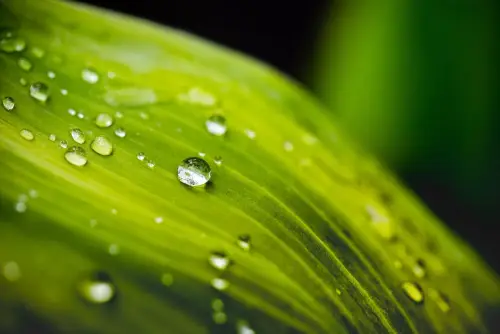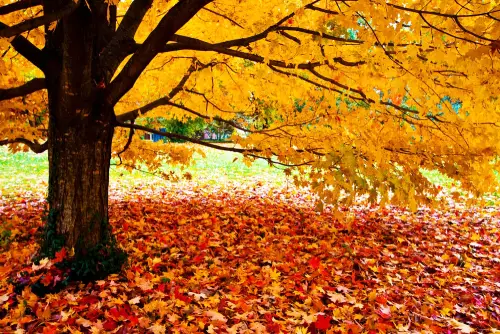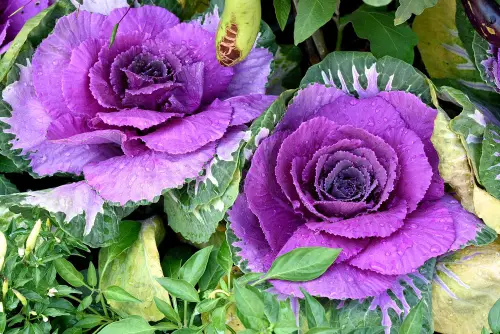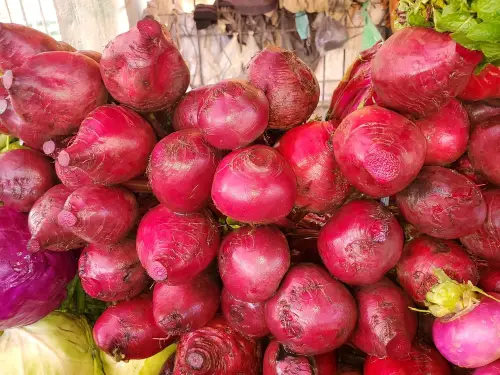.webp)
The Grounds Guys explain how plants get their color.
|
Last Updated June 6, 2023
Have you ever stopped to wonder why plants have color, why plants have different colors, why plants change color in the fall, and how plants get their color? It’s a fascinating subject, in part because the answer is not as simple as you might think!
Pigments are responsible for the beautiful colors we see in flowers and leaves. But there are actually several factors that create colorful indoor plants and outdoor plants with colorful leaves and flowers. Let's take a closer look at how and why plants have colors and how humans have used plant pigments in diverse and creative ways.
Table of Contents:
Understanding Pigments
Pigments are molecules that selectively absorb certain wavelengths of visible light and reflect others. The plant cells that contain pigments are located in different layers of the epidermis or outermost layer of the plant. The thickness of these cell layers, as well as the type and amount of pigment present, affect the color that is seen. Some pigments commonly found in plants include:
Chlorophyll

Chlorophyll is the pigment that makes leaves appear green. It is found in the chloroplasts of plant cells and helps plants with photosynthesis, the process of converting light into energy. Chlorophyll absorbs red and blue wavelengths of light and reflects green wavelengths.
Carotenoids

Carotenoids are another type of pigment found in plants. These pigments are yellow, orange, or red and are responsible for the fall colors of leaves. Carotenoids are found in the chromoplasts of plant cells. They absorb blue and green wavelengths of light and reflect yellow, orange, and red wavelengths.
Anthocyanins

Anthocyanins are water-soluble pigments that give flowers their blue, purple, or red colors. They are found in the vacuoles of plant cells and can absorb all wavelengths of light except blue, which they reflect.
Betalains

Betalains are pigments that give beets and other plants their red or yellow color. They are found in the vacuoles of plant cells and can absorb all wavelengths of light except red or yellow, which they reflect.
Related Topic: How to Attract Hummingbirds to Your Yard
Why Plants Have Different Colors
So why do plants have different colors? The different colors of plants are created by the amount and location of different pigments in plant cells. When flowers bloom or plants change colors in autumn, that is a visible display of different mixtures of pigments. The more dominant a particular pigment is, the more strongly the color of the plant will appear. For example, plants with high levels of anthocyanin will appear red or purple due to the abundance of this pigment. Changing seasons can also cause changes in pigment levels, allowing some plants to change colors. If you've ever asked yourself why do plants change color in fall, now you know!
How Humans Have Used Plant Colors
Plants have been used to create dyes, herbal medicines, and aesthetics for centuries. In fact, some of the first dyes were made from plants! Other common uses for plant colors include:
Dyes
Plant colors have been used to dye fabrics, leather, and even hair. Food coloring can be derived from plants, too, and is often a healthier option than other kinds.
Herbal Medicines
Plants have been used as herbal medicines for centuries. The active ingredients in plants can be used to treat a variety of ailments. For example, the bark of the willow tree has been used to treat pain and inflammation. The leaves of the eucalyptus tree have been used to treat colds and respiratory infections. And the flowers of the chamomile plant have been used to treat anxiety and insomnia.
Aesthetics
The ancient Egyptians used plant colors to create makeup and medicines, while people throughout history have used plants to add color to buildings, paints, stained glass, and much more!
Related Topic: How to Set Zones on Your Sprinkler System for Efficient Watering
Contact The Grounds Guys for Your Garden Needs
Now that you know more about how and why plants have color, you can more easily use plants to add color to your yard and your life. If your yard or garden could use more color, The Grounds Guys can help. We’re experts when it comes to choosing just the right combination of plants and flowers to brighten up your residential landscaping. We can also help you choose colorful shade plants that will add color to any corner of your property. To learn more give us a call or request an estimate online today!